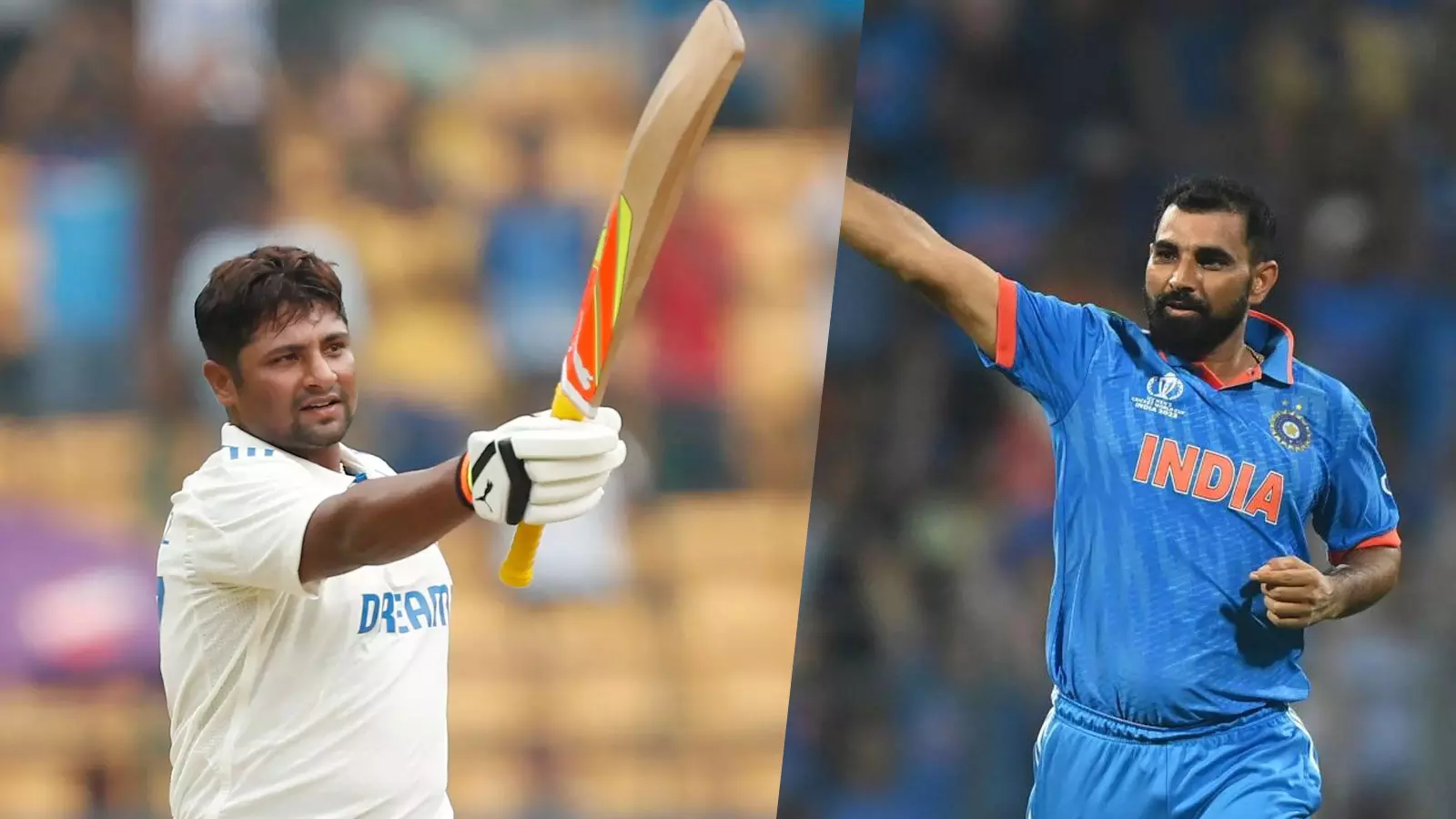
- Home
- India
- World
- Premium
- THE FEDERAL SPECIAL
- Analysis
- States
- Perspective
- Videos
- Sports
- Education
- Entertainment
- Elections
- Features
- Health
- Business
- Series
- In memoriam: Sheikh Mujibur Rahman
- Bishnoi's Men
- NEET TANGLE
- Economy Series
- Earth Day
- Kashmir’s Frozen Turbulence
- India@75
- The legend of Ramjanmabhoomi
- Liberalisation@30
- How to tame a dragon
- Celebrating biodiversity
- Farm Matters
- 50 days of solitude
- Bringing Migrants Home
- Budget 2020
- Jharkhand Votes
- The Federal Investigates
- The Federal Impact
- Vanishing Sand
- Gandhi @ 150
- Andhra Today
- Field report
- Operation Gulmarg
- Pandemic @1 Mn in India
- The Federal Year-End
- The Zero Year
- Science
- Brand studio
- Newsletter
- Elections 2024
- Events
- Home
- IndiaIndia
- World
- Analysis
- StatesStates
- PerspectivePerspective
- VideosVideos
- Sports
- Education
- Entertainment
- ElectionsElections
- Features
- Health
- BusinessBusiness
- Premium
- Loading...
Premium - Events

From Sarfaraz Khan’s omission to political mudslinging, India’s selection system is once again under fire for inconsistency, opacity, and poor communication
Indian cricket finds itself at a familiar crossroads. The same one where talent, politics, and perception collide. The latest controversy surrounding Sarfaraz Khan’s omission from the India A squad for the upcoming South Africa A series has once again brought the selection system under the scanner.
At a time when the focus should be on preparation for the 2027 ODI World Cup and building a stable transition phase, Indian cricket finds itself defending the very foundation of its selection process and trust.
For years, Sarfaraz has been a symbol of consistency and perseverance in India’s domestic circuit. With (once) an average of over 100 in first-class cricket across recent seasons, and impressive outings in the limited opportunities he’s received for India, his exclusion has left fans and former players bewildered. Many have questioned what more the 26-year-old needs to do to break through a system that often appears unpredictable in its decisions.
Also Read: Women's World Cup: India seal semi-final spot with win over New Zealand
Backlash over exclusion
Across 56 first-class matches, he averages a staggering 65.19, with 14 hundreds and 13 fifties. Between 2019 and 2024, his average soared above 100, making him one of the most consistent run-scorers in Indian domestic cricket.
He carried that form to the international stage as well, scoring twin half-centuries on Test debut and then a century against the visiting New Zealand team. For many, his omission from the India A squad for the upcoming South Africa A series was not just surprising, but indefensible.
The official explanation pointed to a recent quadriceps injury and a need to manage his workload. Yet, fans and experts alike weren’t convinced.
Former India spinner Ravichandran Ashwin openly expressed disbelief, saying, “If I were a selector, what would I call and tell Sarfaraz? He has reduced weight, scored runs too and even hit a century against New Zealand. This non-selection leads me to think that someone, somewhere thinks, ‘Sarfaraz Khan ko dekh liya, abhi nahi chahiye (We’ve seen Sarfaraz Khan, don’t need him anymore)”.
Also Read: Cong alleges religious bias in Sarfaraz’s omission from Indian squad, BJP hits back
Between 2019 and 2024, his average soared above 100, making him one of the most consistent run-scorers in Indian domestic cricket. File Photo: X/BBCI
Political storm over selection
Then came the political storm. Congress spokesperson Shama Mohamed alleged that Sarfaraz’s “surname” had a role in his non-selection, a claim swiftly denounced by the BJP as an attempt to communalise cricket. What should have been a conversation about performance and selection transparency was suddenly hijacked by political rhetoric, something Indian cricket can ill afford.
The bigger problem is perception. When players performing at Sarfaraz’s level are repeatedly sidelined without a convincing explanation, it breeds cynicism among fans, domestic players, and even within the dressing room. And once that trust erodes, rebuilding it is far more difficult than rebuilding a team.
Recently, veteran pacer Mohammad Shami also voiced his frustration. Despite reportedly clearing fitness tests, Shami said he had “no idea” why he wasn’t being picked. Chief selector Ajit Agarkar’s response didn’t help. In a press conference, he simply said he would “speak to Shami directly,” and that he didn’t know what Shami was referring to.
Also Read: Will Messi play in Kerala? Argentina's friendly match has become a political football
The statement sounded evasive, almost dismissive, and left a senior player with over 400 international wickets dangling in uncertainty. Ironically, Shami, in the Ranji Trophy game that followed this drama, took 7 wickets against Uttarakhand, conceding just 75 runs across both innings.
For a player of Shami’s stature to publicly express confusion about his status reflects a larger communication breakdown. Selection, at its core, isn’t just about picking the best XI; it’s also about ensuring players understand where they stand. When that clarity is missing, insecurity follows and spreads fast.
Rana's selection sparked a controversy
Adding fuel to the fire, is the inclusion of Harshit Rana, the young Kolkata Knight Riders fast bowler, in recent Indian squads. Rana, though talented, has only a handful of domestic and international appearances to his name. His selection sparked an immediate social media backlash, with several former players hinting at favouritism due to his IPL connection with India’s head coach Gautam Gambhir, who mentored him at KKR.
Former players, including ex-selector Krishnamachari Srikkanth, slammed the move, saying selections “must be based on performance, not proximity”. The implication was clear that the system might be rewarding familiarity over form.
Gambhir, to his credit, pushed back strongly. He called it “shameful” that a youngster was being targeted for social media engagement and emphasised that Rana had “earned his place on merit.” Yet, the debate refused to die down, feeding into the growing narrative that the current selection and coaching regime is vulnerable to bias or at least the perception of it.
Across 56 first-class matches, Khan averages a staggering 65.19, with 14 hundreds and 13 fifties. File Photo: X/BCCI
Also Read: Mohammed Shami takes dig at selectors after Australia tour snub, cites Ranji fitness
Uncertainty of senior players
All of this comes amid uncertainty surrounding India’s senior players. The surprise Test retirements of Rohit Sharma and Virat Kohli earlier this year left fans puzzled, especially since both had played domestic red-ball games earlier in the season, signalling continued interest.
Add to that the non-committal stance from selectors on whether either will feature in the 2027 World Cup, and the picture becomes even murkier. For followers of Indian cricket, it feels as if major decisions are being taken or deferred without coherent communication.
Selection might seem an internal matter, but in a cricket-obsessed country like India, it defines the public’s relationship with the sport. If players believe runs and wickets don’t guarantee opportunity, the domestic system loses its motivational core. If fans believe selections are politically influenced or biased, the credibility of the national setup takes a hit.
Also Read: Online betting case: ED to attach assets of cricketers, actors
Selection process becomes critical
India is blessed with depth like no other cricketing nation but that very depth makes fairness essential. Talent is abundant; trust is not. The current controversy is not about one player, or one decision. It’s about a system that appears to be losing its clarity of purpose.
Also Read: Sanju Samson stays silent on Asia Cup trophy row; 'took Mohanlal's attitude for batting'
India’s cricketing pipeline, from domestic to international, thrives on belief. The moment players start doubting that performance will be rewarded, that belief begins to crack. With a new generation led by Shubman Gill now being groomed for the 2027 World Cup, the integrity of the selection process becomes even more critical.
The Ajit Agarkar era was supposed to usher in a streamlined, future-ready selection philosophy. Instead, it’s battling questions of bias and communication gaps. The selectors don’t just pick teams, they shape careers, and the collective faith of a billion fans.
It’s time those choices inspire confidence again and not controversy!
(The Federal seeks to present views and opinions from all sides of the spectrum. The information, ideas or opinions in the articles are of the authors and do not necessarily reflect the views of The Federal.)


